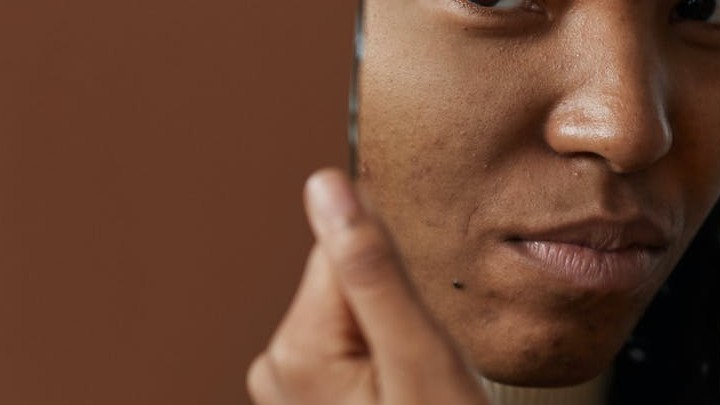Niacinamide falls under one of the essential ingredients you will find in one skincare product or two. It’s touted as an all-around ingredient that works on anything. However, is niacinamide good for acne?
Acne is a skin condition that many people struggle with. It’s not just teenagers who have acne, either. Many adults also find themselves dealing with acne. Acne can also be difficult to hide and affects your self-esteem.
Fortunately, several treatments can be used to get rid of acne. One of these treatments is niacinamide, which can be taken orally or applied directly to the skin as serum or moisturizer.
Read on to learn more about niacinamide and how you can incorporate this important vitamin into your anti-acne regime.
What is niacinamide?
Niacinamide is a form of vitamin B3 that can improve the appearance of all skin types.
It’s an important nutrient found in many vitamin supplements and foods, such as fruits, vegetables, whole grains, and dairy products.
“Niacinamide is also a super common ingredient in skin care products and is a great alternative to retinol or benzoyl peroxide, which are harsher ingredients,” Dr. David Khalil, a board dermatologist, explains.
According to him, this form of vitamin B3 is gentle enough for sensitive or acne-prone skin. It also works well with other skin ingredients like salicylic acid, hyaluronic acid, and retinoids.
Is niacinamide good for acne?
“Niacinamide helps to reduce acne by targeting inflammation and suppressing sebum (oil) production without irritating the skin like benzoyl peroxide,” Dr. Khalil, explains.
“And unlike benzoyl peroxide, it doesn’t cause dryness and peeling of the skin, which can lead to further inflammation and worsen your acne,” Khalil explains further.
Niacinamide is not an antibiotic, but it kills bacteria on the skin’s surface, which will help reduce acne inflammation on your skin. It also helps to decrease the amount of oil your skin produces while clearing out your pores.
As time passes, you will notice that your skin becomes less irritated, and inflammation will start to disappear. Apply a niacinamide product to the acne spot twice daily for two weeks and then once daily thereafter.
Is niacinamide good for cystic acne?
For many people, the words acne and cystic acne are interchangeable. In reality, cystic acne is a subtype of acne with some extra baggage attached to it. It’s called cystic because it forms deep inside your skin rather than on top.
Niacinamide is one of the most effective medications for the treatment of cystic acne.
You can take it orally or apply it as a topical treatment to reduce the appearance of cystic acne.
Cystic acne is usually linked to excess oil production that causes clogs in the pores, creating an environment where bacteria can thrive. To prevent this, niacinamide works by reducing oil production and absorbing excess oil in pores.
According to Dr. Khalil, this ingredient also works as an anti-inflammatory agent, which can help promote healing and reduce inflammation in the pores. It also helps prevent cystic acne by eliminating acne-causing fungi and bacteria.
Is niacinamide good for fungal acne?
Niacinamide is the best treatment for fungal acne.
Fungal acne is a type of infection characterized by whiteheads and blackheads. It differs from common acne because it does not result from hormones, bacteria, or dirt on the skin.
This type of acne is caused by a fungus, which is commonly known as “sweatsuit fungus” because it usually occurs after wearing synthetic clothes or exposing the skin to excess moisture and heat.
“Niacinamide is an effective ingredient for fungal acne. It can reduce redness, prevent oiliness and control the growth of the fungus by removing dead skin cells from the surface of your skin,” says Dr. Douglas Altchek.
These properties of niacinamide make it a highly beneficial treatment for fungal acne. For best results, use it with antifungal medications like fluconazole. You should notice a visible change in your skin after 4 weeks of regular use.
Is niacinamide good for hormonal ccne?
Niacinamide is one product that has been very successful in treating hormonal acne.
It acts on multiple fronts to reduce redness and inflammation, kill bacteria and reduce oil production.
According to the American Academy of Dermatology, hormonal acne is the most common type of acne, accounting for about 75% of all cases. It occurs as a result of fluctuating hormones, which can be caused by several factors.
“These fluctuating hormones cause an overproduction of oil in the skin’s sebaceous glands. The excess oil clogs pores and blocks hair follicles, causing whiteheads and blackheads,” Altchek explains.
Niacinamide works by reducing the production of oil, which leads to fewer clogged pores and hormonal acne. It also reduces redness and inflammation, making your skin texture and tone healthier.
Can niacinamide lighten acne scars?
Yes, it can. Niacinamide is one of the most effective ways to lighten acne scars.
This ingredient can help brighten scars by stimulating collagen activity and inhibiting melanin production in the skin.
Melanin gives skin its color, so when this production is reduced, your scars will appear much lighter. Niacinamide also increases cell turnover rate, which helps to remove dead skin cells that create dullness and discoloration.
In addition to these benefits, niacinamide can also help to lighten acne scars by stimulating the skin’s production of glutathione, an antioxidant that prevents free radicals from damaging skin cells.
Although niacinamide works great on its own, you can also pair it with other skin-lightening ingredients like retinol when possible because it helps increase its absorption rate.
Are there any side effects?
The side effects of niacinamide are rare, but you should consider them before applying it topically or taking it orally as a supplement.
“If you have oily skin, too much niacinamide can create an effect called ‘flushing’ as your blood vessels dilate to release heat from the body,” Khalil says.
Furthermore, it is important to avoid using niacinamide if you’re taking blood-thinning medications or have a bleeding disorder, as it will increase your risk of bleeding. It may also decrease the effectiveness of birth control pills and antibiotics.
In some rare cases, niacinamide can cause side effects such as diarrhea, dizziness, headache, runny nose, and rash. To prevent this, ensure to consult a doctor before using any niacinamide supplements or products for your skin.
Niacinamide dosing
Niacinamide is an effective topical treatment for acne, and while you can ingest it orally, you can also apply it to your skin. The dosage of topical niacinamide varies depending on the concentration, which ranges from 1% – 20%.
A general guideline for best results is to use something between 5% – 10%. Consult a dermatologist to determine what amount will work best for your skin type.
For oral niacinamide, the suggested daily intake for acne is 750 milligrams per day. However, avoid self-medicating and check with your doctor before taking any niacinamide supplements.
How long does it take to see results?
As with all skincare products, you should know that sometimes it takes time before you see results. So you probably won’t see any difference within the first week or two of using niacinamide.
It may take up to two months for your skin to show any improvement, but the process becomes faster with continued use. Some people have to apply their niacinamide every day for several months before they notice a difference.
How can you use niacinamide?
Supplements
Niacinamide is available in many supplement forms, including tablets, capsules, and liquids. The most common are tablets or capsules, which you can take daily with water.
However, it’s important to speak with your doctor or pharmacist about how often you need to take the component per day for this medication to be effective.
Topical products
Before using topical niacinamide, test a small amount on a patch of your skin to see if you have any allergic reactions or irritation.
You can do this by applying a small amount of niacinamide to the inside of your elbow or wrist for 24 hours. If you develop any signs of redness or swelling during this time, stop using niacinamide immediately and consult your doctor.
How to apply niacinamide:
- Start by cleansing your face and neck thoroughly.
- Take a few drops of the niacinamide product and rub it gently on your face.
- Leave it for 10-15 minutes before applying other skincare products.
- Use a moisturizer with sunscreen if you have one. But if you don’t, ensure to apply sunscreen with SPF 15 or more.
Use this product at least twice a week, and you will see noticeable changes in your skin after two months.
What can you mix with niacinamide for acne?
As far as anti-acne ingredients go, salicylic acid is one of the most well-known. It’s also one of the most effective, which is why it’s so popular among acne fighters.
Niacinamide and salicylic acid are key ingredients in the fight against acne on the skin. While niacinamide is a natural nutrient found in foods, salicylic acid is derived from willow plants.
“Salicylic acid helps to treat acne by reducing the production of sebum and removing dead skin cells that clog pores. This property makes it an effective treatment for mild-to-moderate acne when applied topically,” Altchek explains.
When used together, niacinamide and salicylic acid work together to fight acne while smoothing out rough texture and improving your skin tone.
Other topical acne ingredients
FAQs

Is niacinamide safe?
Yes, it is.
Niacinamide is a safe and ideal way to improve the appearance of your skin by making it look smoother and healthier.
Although it’s not as effective as prescription retinoids, it’s gentler and doesn’t cause irritation, redness, or peeling. The only side effect you might experience from using niacinamide is skin flushing, which is uncommon.
Can you use niacinamide every day?
Yes, you can.
Niacinamide is a gentle form of vitamin B3 that is highly effective but safe for everyday use.
However, dermatologists recommend you start with a low dose and then gradually increase your dosage to allow your skin to get used to it. This will also allow the niacinamide to work effectively without causing any unpleasant side effects.
How do you know if niacinamide is working?
Monitor the condition of your acne.
Keep track of your acne for about 4 weeks to determine if there is a change or not.
If you notice any positive difference, continue using niacinamide. But if you think it isn’t working for you, make sure you’re applying niacinamide correctly and taking the right dosage for your skin type.
Conclusion
Acne is hard to deal with, but it doesn’t have to be. Niacinamide is one of the most effective topical products you can use to get rid of those pesky zits.
This vitamin B3 derivative helps to decrease the production of sebum in the skin while absorbing excess oils and eliminating acne-causing bacteria and fungi.
Besides treating acne, niacinamide can help with acne scars by reducing melanin production and increasing cell turnover. It also works effectively with other skin ingredients like salicylic acid.
With so many benefits and so few side effects, niacinamide seems like the perfect addition to any acne-fighting routine.
Thanks for reading.
You can get more helpful beauty tips here on MBGON.



